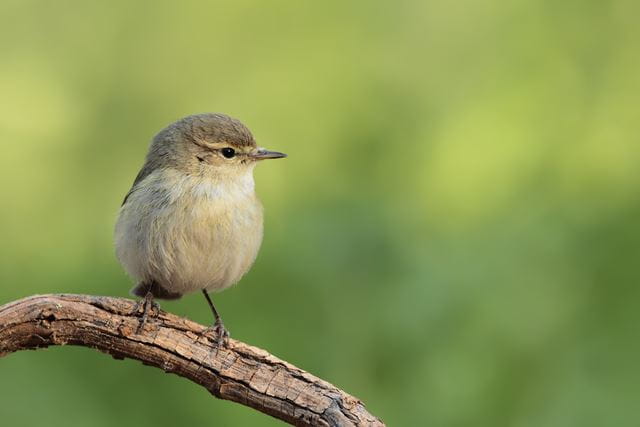
Bird watching is booming in the UK, with some three million of us twitching away
You don't have to travel to tropical rainforests to hear some of the best of nature's music – just stick your head out of your bedroom window at four in the morning
I found myself earlier this month perched by an open window in the half light of dawn, head cocked like a house sparrow, trying to make out the different songs from the morning chorus.
There it was – the sweet sound of a blackbird, clearly identifiable above that high pitched cheep of a robin and a loud and insistent wren.
It was the first time I had ever acknowledged International Birdsong Day (1 May) and I was able to distinguish a number of birds for the first time, an achievement which gave me no small pleasure.
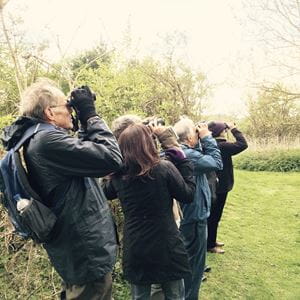 My new-found interest in our feathered friends had crept up on me slowly over the past couple of years, culminating in me suddenly realising I wanted to be able to identify rather than just notice birds.
My new-found interest in our feathered friends had crept up on me slowly over the past couple of years, culminating in me suddenly realising I wanted to be able to identify rather than just notice birds.
Step in the Field Studies Council (FSC) – an independent environmental education charity providing opportunities for people to learn more about the environment.
In 1943, the founders of the FSC gathered at London’s Natural History Museum to realise their vision to ‘provide opportunities for school children to study living plants and animals in their natural environment’.
Today, the charity runs hundreds of courses nationwide for people of all ages and abilities – from bumblebee, bat and bird watching, through to moth-trapping and coracle making to willow-weaving.
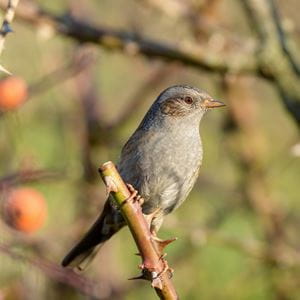 Within the flap of a wing I have signed up for a day-long ‘Bird Identification Course’ run by the British Trust for Ornithology (BTO) in Bushy Park, close to Hampton Court.
Within the flap of a wing I have signed up for a day-long ‘Bird Identification Course’ run by the British Trust for Ornithology (BTO) in Bushy Park, close to Hampton Court.
And so it is one cold, bright morning in April that I find myself in a small group of bird enthusiasts with ornithology expert John patiently explaining the difference between a chiff chaff and a willow warbler.
The more he talks about the methods used to identify birds the more I begin to see that bird watching is as much an art as a science.
'Identifying a bird is not a matter of just spotting one through a pair of binoculars, but a combination of a number of elements, namely: habitat, plumage, behaviour, song, the way it moves and the time of year,' explains John.
Binoculars around necks and notebooks in hand, our group sets off on its treasure hunt and is rewarded almost immediately by a small owl on a nearby roof, basking in the sun.
Bushy Park is a haven for wildlife and birds, and it feels great to be wandering around in such beautiful surroundings, with just the birdsong and occasional snap of a twig in the undergrowth as we become gradually more attuned to our surroundings.
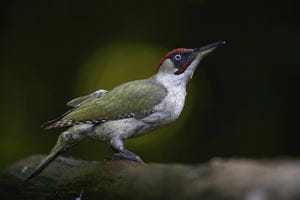 It’s not just birds I notice, but buds bursting into flower, bumblebees and butterflies.
It’s not just birds I notice, but buds bursting into flower, bumblebees and butterflies.
In an attempt to join in with finding interesting birds, I enthusiastically mimic the sound coming from beyond the trees, asking if it might be a crow or a jackdaw. The course leader wrinkles his nose slightly as he listens to my song.
‘A duck’ he says, a faint smile hovering on his lips.
There are indeed ducks around the corner, mallards and coots and moorhens and Canada Geese too. I swallow my embarrassment and am humbled by the sight of a pair of Egyptian Geese ushering their eight young across a pond, tiny bundles of feathers on legs.
My sheet of bird names is looking quite healthy by lunchtime, and includes a number of birds we’ve spotted that I had hitherto not heard of let alone seen – a pair of dunnocks, a blackcap, both a song and a mistle thrush, a chiff chaff, even a cheti warbler.
After sandwiches and a flask of tea back at HQ, the merry band of birders reconvene for more spotting in the afternoon, and I am treated to the sight of my first greenfinch and a green woodpecker, flying towards and then away from us like a bullet.
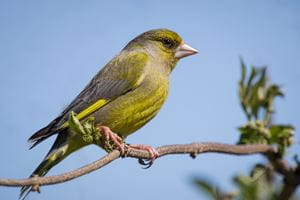 One of our crew is very quick to spot birds first and hops about with his binoculars glued to his brow, pointing in various directions at distant shapes I can’t make out and calling out bird names confidently.
One of our crew is very quick to spot birds first and hops about with his binoculars glued to his brow, pointing in various directions at distant shapes I can’t make out and calling out bird names confidently.
My favourite parts of the day were sitting in a hide, watching blue tits eating from a feeder a few feet ahead of me, and spotting a tiny wren on a log in the forest, its trilling seeming impossibly loud for such a small creature.
I have ticked 33 different types of bird on my list and am pleased to have correctly identified a jay on a far off branch, and a couple of herons flying low over the marsh.
Although I know I will never be a full blown ‘birder’ the course has had the happy effect of making me much more aware of the birds all around us every day.
And I am convinced that the morning birdsong in my garden now sounds twice as sweet.
For more information on having a go yourself, contact the Field Studies Council

